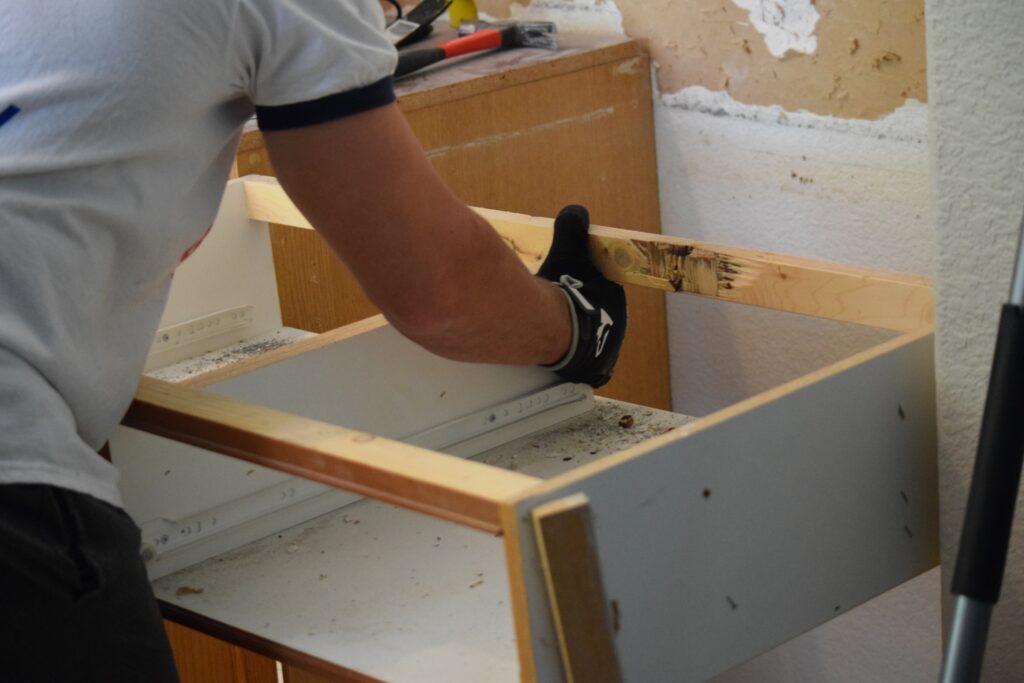When it comes to house flipping…
the kitchen and bathroom are two important spaces to focus on. These areas not only provide essential functions but also significantly impact the overall appeal and value of a property. Within these spaces, countertops play a critical role. Investing in the right countertops can enhance both functionality and aesthetics, ultimately boosting the property’s market value and appeal to potential buyers. This article aims to guide house flippers through the process of estimating countertop costs and making informed material selections, focusing specifically on granite and quartz.
Before diving into the differences between granite and quartz, it’s important to understand the factors that influence countertop costs. This knowledge will help you make a well-informed decision that aligns with your budget and project goals.
Size and Shape:
The size of the kitchen is the primary cost driver. Larger kitchens require more materials and labor. A single standard-sized slab usually can accommodate a 40 to 45 sq.ft. kitchen. Jumbo slabs can usually cover 50 to 55 sq.ft. You should work with your countertop fabricator in selecting materials that appeal to your design ideas and are appropriately sized for your project.
The complexity of the shapes will impact the overall cost as well. If at all possible, avoid 45-degree angles, these are called “Batwings” and are inherently inefficient in material utilization. The most efficient utilization of material (and coincidently the most user-friendly) is a galley style kitchen.

Materials cost and characteristics of granite and quartz:
The countertop material you choose is a primary cost driver. Generally speaking, a level 1 granite is less expensive than a level 1 quartz. A level 1 quartz is comparable in price to a level 2 or 3 granite. Most home buyers prefer countertops that are primarily white and not too busy – and this is a safe bet for flipping a house. Level 1 granites are inherently busy, they are a homogeneous aggregated pattern of various colors that include white and will match white but are definitely not primarily white.
Quartz is available in a wide range of colors and patterns, because it is manufactured, coloring and patterning are geared towards consumer preferences and current design trends. Accordingly, primarily white and not too busy is widely available in various complementary colors and patterns. The cost of quartz spans a wide price-range; however, a good rule of thumb is — if it looks expensive, it probably is expensive. The aggregated quartz colors are level 1 to 3, and the calacatta style (distinct defined veining) are levels 4 to 6.
Budget friendly quartz options do exist. Because quartz is man-made and manufactured, it has a defined lifecycle. And just like fashion, discontinued items go on sale. There are deals out there, just ask your countertop fabricator if there are any slabs on sale and remain flexible in your design preferences if you are prioritizing cost.
Granite Pros for house flippers:
- Will increase property value
- Less expensive that quartz
- More heat tolerant than quartz
- Usually available in large slabs
- Made by Mother Nature and every slab has unique characteristics, no two are the same.
Granite Cons:
- Not primarily white and typically has a “Busy” pattern
- Granite is porous and requires sealing to protect it against staining, however the inherent busy pattern often hides stains and messy countertops.
Quartz Pros for house flippers:
- Consumers tend to prefer quartz, the industry has done a fantastic job marketing quartz as a whole
- Wide variety of color and patterning options – versatility
- Less maintenance than natural stone, no sealing required
Quartz Cons:
- More expensive than granite
- Less heat tolerant than natural stone
- It’s manufactured, so the pattern and color is not unique
Cost-Saving Tips for your house flip:
- Be flexible with the color selection, right sizing the kitchen countertops to the slab impacts the price
- Ask for discontinued / sales on quartz colors
- If choosing quartz, the level 1 aggregated color options are the least expensive
- Select granite if your primary goal is saving money
- Utilize leftover pieces from larger projects for bathrooms and vanities, again be flexible because the available colors are limited.
Selecting the right countertops for your house flip can make a significant difference in the overall appeal and value of the property. By understanding the costs and characteristics of granite and quartz, you can make an informed decision that balances aesthetics, durability, and budget. Remember to consider the factors that influence countertop costs, explore cost-saving tips, and match your material selection to the target market of your flip. Investing in the right countertops can enhance your property’s marketability and maximize your return on investment.


